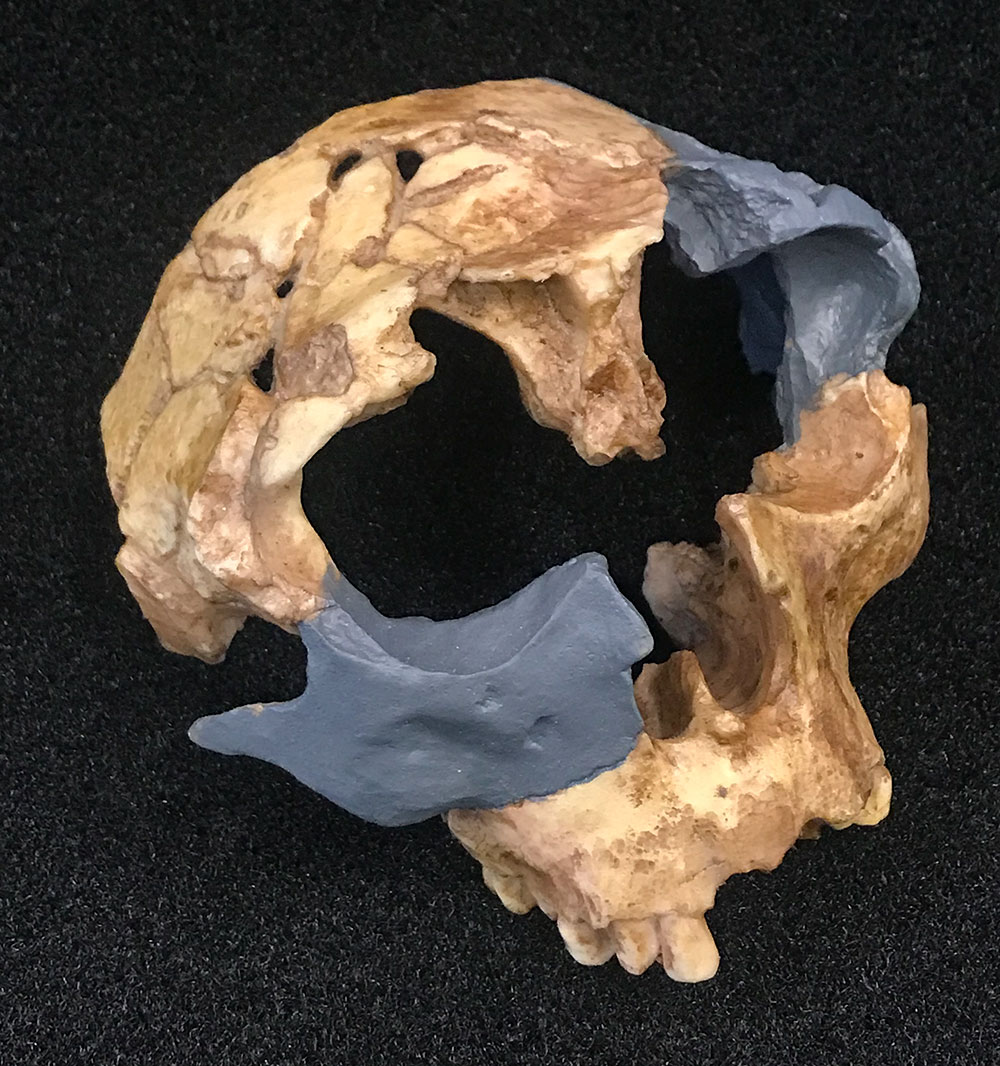Homo antecessor
Cranium ATD6-69 - 936,000 Years Ago

This Homo antecessor cranium was discovered in 1995 by J. M. Bermudez de Castro at the Gran Dolina site in Atapuerca, Spain, and described in Science in 1997. Before the discovery of the fossils and stone tools at the site, which dated to 936,000 ya, there was little evidence that would substantiate the presence of hominins in Europe before a half million years ago. Homo antecessor (brain size over 1,000 cc) possessed characteristics of both Neanderthals and Homo sapiens including the bulky brow and big jaw of Neanderthal and the cheekbones and nose of Homo sapiens. The species designation for these fossils is controversial with many researchers considering the find to be Homo heidelbergensis, a taxon that is intermediate between Homo erectus and the late archaic Homo sapiens forms such as Neanderthals.
Genetic analysis and mapping reveals Denisovans as cousins of Neanderthals, breaking off about 400,000 – 500,000 years ago. It also suggests that, along with Neanderthals and modern humans, Denisovans either descended from or shared a common ancestor with H. heidelbergensis. DNA sequencing of present-day modern humans, as well as archaic remains, indicates a degree of interbreeding between all three of these closely related, once-coexisting species. There is some evidence to suggest that H. sapiens may have been interbreeding with Denisovans as late as 15,000 – 30,000 years ago.
Read more Australian Museum's Homo antecessor
- Hominin Skulls - Select a Species
- Ardipithecus kadabba
- Ardipithecus ramidus
- Australopithecus afarensis
- Australopithecus africanus
- Australopithecus anamensis
- Australopithecus garhi
- Australopithecus sediba
- Denisovans
- Homo antecessor
- Homo erectus
- Homo floresiensis
- Homo habilis
- Homo heidelbergensis
- Homo naledi
- Homo neanderthalensis
- Homo rudolfensis
- Homo sapiens
- Kenyanthropus platyops
- Ororrin tugenensis
- Paranthropus aethiopicus
- Paranthropus boisei
- Paranthropus robustus
- Sahelanthropus tchadensis

